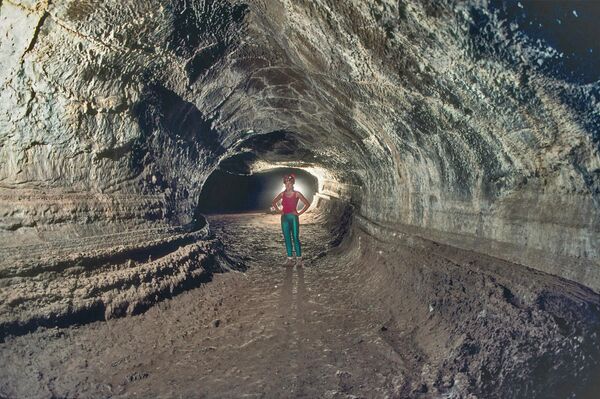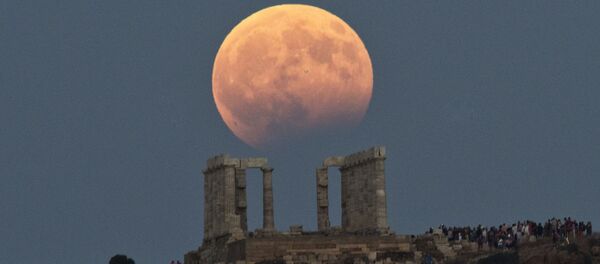By studying the geography of the Moon and the Red Planet, scientists have arrived at the conclusion that massive lava tube caves on the Moon and Mars may be ideally suited for human colonization, Europlanet-eu.org, the official website of the EAS, reports.
'Lava tubes' are channels formed during the uneven cooling of lava. The lava's upper surface layers cool faster and harden, resulting in a solid crust, from which liquid lava gradually disappears, forming tunnels.
Scientists believe the lava tubes on these terrestrial bodies can protect colonizers from cosmic radiation and micrometeoroid strikes, foregoing the need for inflatable housing, 3D-printed structures or other methods scientists have come up with for colonizing the broad reaches of our solar system.
Italian researchers conducted a comprehensive comparison of lava tube structures on Earth, the Moon and Mars based on high-resolution Digital Terrain Models captured by spacecraft. On Earth, such structures can be found in places like Spain's Canary Islands, Kenya's Leviathan Cave, and the Kazumura Cave in Hawaii (currently the longest known lava tube in the world, at 65.5 km long).

It is believed that they can be much, much longer on the Moon and on Mars, thanks to the reduced effect of gravity on these terrestrial bodies.
According to University of Padova professor Dr. Riccardo Pozzobon, while Earth-based lava tubes may reach up to 30 meters wide, similar caves formed on Mars may be up to 250 meters across. On the Moon, such formations can reach a kilometer across, and be hundreds of kilometers long.
"Lava tubes are environments shielded from cosmic radiation and protected from micrometeorites flux, potentially providing safe habitats for future human missions. They are also, potentially, large enough for quite significant human settlements; you could fit most of the historic city center of Riga [Latvia] into a lunar lava tube," Pozzobon noted.

According to the EAS, the Italian scientists' findings are already being used by the European Space Agency for its astronaut training program, with teams of astronauts sent to lava tubes on the Canary Islands to familiarize them with the geology for possible future Moon and Mars colonization missions under a training course called PANGEA.
Leonardo Carrer and his colleagues from the University of Trento have come up with a radar system that can detect lunar lava tubes from orbit. The system works by sending out low-frequency electromagnetic waves, and then measuring the reflected signals, allowing an accurate map of their composition size and shape to be created.
"A mission carrying this instrument would enable a crucial step towards finding safe habitats on the Moon for human colonization," Carrer stressed.





